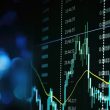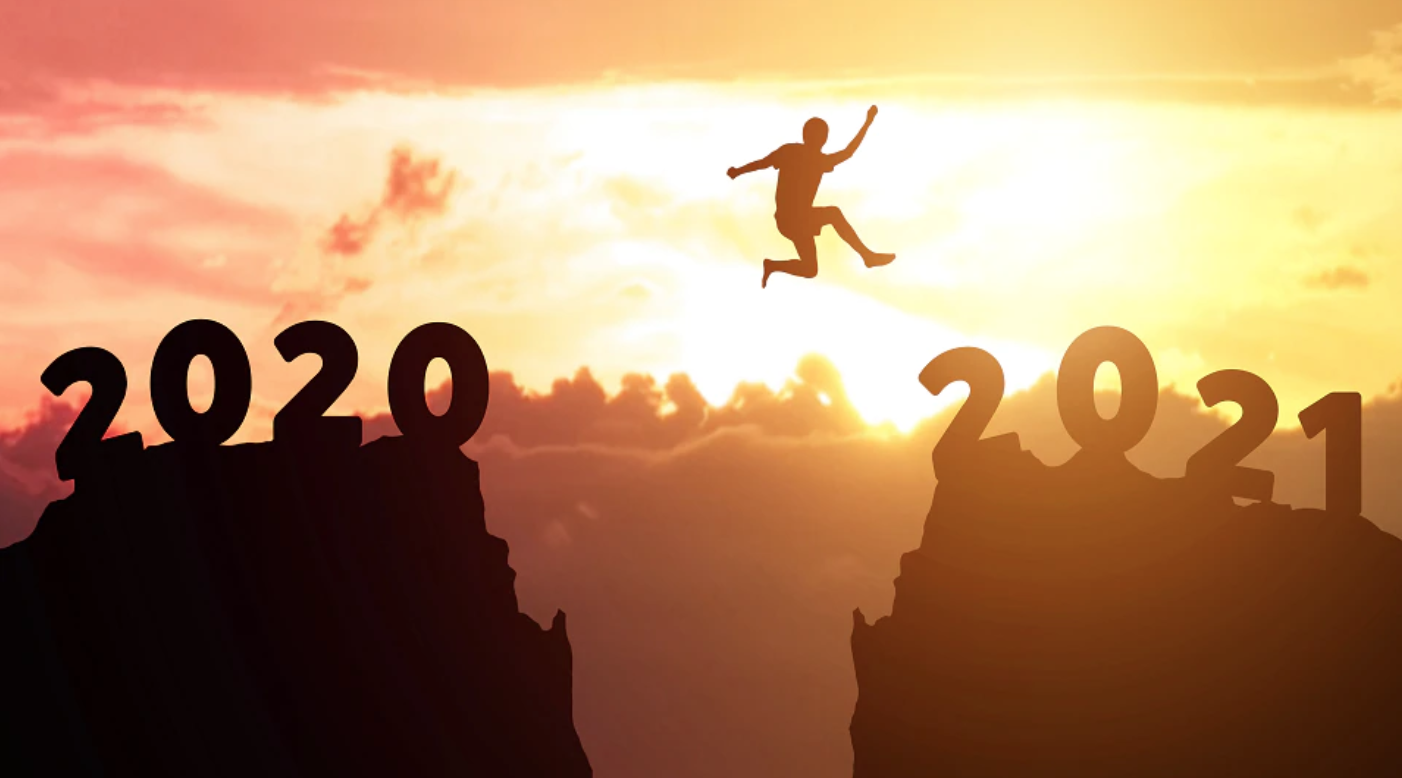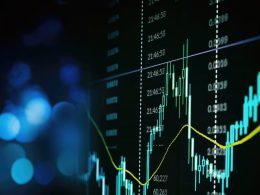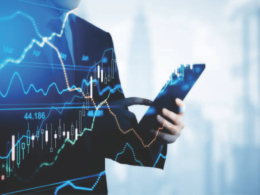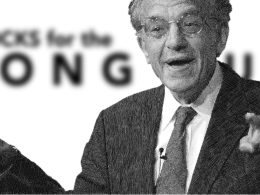by Liz Ann Sonders, Chief Investment Strategist, Charles Schwab & Company Ltd.
Key Points
- Stocks closing out 2020 having crossed the COVID chasm; but the economy has more rough terrain to traverse.
- Vaccines represent the light at the end of the tunnel; but we will enter 2021 still in the tunnel.
- The outlook for 2021 looks sunnier; but frothy sentiment near-term remains a risk.

By Charlos Gary
As we are soon to say a not-so-fond farewell, or good riddance, to 2020, it’s time to look ahead to 2021 and what we all hope is a better year. This year has had multiple alphabetical characterizations; including a V for the stock market’s recovery, a W for the ongoing fits-and-starts of economic activity, and an L for many parts of the leisure/hospitality industries. As illustrated in the opening cartoon, monetary policy has been the stock market’s heavy-lifter, along with stocks’ forward-looking tendencies—allowing it to quickly span the chasm created by the COVID-19 pandemic. Fiscal relief, and the human ingenuity associated with high-efficacy vaccines coming soon, have provided support for consumers and the broader economy. As we close out the year, it’s a bit of a push-and-pull: the vaccine news has pulled forward the post-pandemic improvement to economic growth; while the surge in virus cases nationally is pushing down near-term growth projections
The aforementioned V, W and L aren’t the full story though. The letter that best characterizes the unique implications of a health crisis-turned economic crisis is a K.

Source: Charles Schwab. Big 5 stocks and other 495 stocks represent members of the S&P 500. For illustrative purposes only.
The pandemic unleashed massive divergences within the economy and the stock market. Some of these divergences persist, including:
- Rising permanent job losses vs. declining temporary unemployment
- Ease with which many high-income workers can work remotely vs. lower-income workers without that flexibility
- Stronger trends in goods production/consumption vs. weaker services
- Booming residential real estate vs. beleaguered commercial real estate
- Booming online retail vs. beleaguered brick & mortar retail
- Strong money supply growth vs. weak money velocity
Other divergences unleashed by the virus are beginning to converge; including:
- Big 5 stocks’ outperformance relative to other 495 within S&P 500
- Options market speculation vs. traditional mutual fund/ETF flows
- Stay-at-home stocks vs. get-out-and-about stocks
Economic outlook
In the midst of the economic lockdown phase of the pandemic, the Federal Reserve Bank of New York created a new leading economic index—the Weekly Economic Index—comprised of ten high-frequency indicators of real economic activity, covering consumer behavior, the labor market and production. It is published twice per week, so it gives us an up-to-the day snapshot of economic activity. As you can see below—and as is the case with many individual economic data series—the WEI has had a V-shaped recovery; but has only retraced about two-thirds of the contraction brought on by the pandemic. The same can be said about overall gross domestic product (GDP): after contracting by -5% in the first quarter and -31% in the second quarter; it rebounded by +33% in the third quarter (on a quarter/quarter annualized rate). Of course the way math works, the third quarter jump did not fully retrace the prior contraction; and GDP is also only about two-thirds of the way back to a full recovery.
WEI’s Partial Rebound

Source: Charles Schwab, as of 11/21/2020. Daniel Lewis, Karel Mertens, and Jim Stock, “Monitoring Real Activity in Real Time: The Weekly Economic Index,” Federal Reserve Bank of New York Liberty Street Economics.
Looking ahead to 2021, we believe we will see another dip in economic activity courtesy of the resurgent virus and implications of mandated, as well as self-imposed, lockdowns. But courtesy of the coming vaccines, the outlook beyond the near-term is brighter. If vaccines represent the light at the end of the tunnel; the virus means we are still in a fairly dark part of the tunnel.
Aside from the vaccine, other tailwinds likely include the prospects of a divided Congress and its relatively benign implications for major changes to tax policy, and stronger-than-expected corporate earnings. In addition, although it appears there is limited chance of another fiscal relief package passed during the lame duck session of Congress; there is bipartisan support for a package post-inauguration; while the corporate cash hoard and consumers’ savings are both ample relative to history.
The chart below shows the trajectory of quarterly GDP estimates tracked by Bloomberg. In early September, the consensus was for fourth quarter growth to be more than 6%; while it’s dipped to only 4% recently (caveat: just in the past few days, many Wall Street economists have upped their estimates—some to as high as 8% in the case of Evercore ISI). The biggest hit recently has been to 2021’s first quarter GDP estimates, which have moved from nearly 5% in early September to only 3% presently. Each of the remaining three quarters of next year have 3-handles. I believe some symmetry could be in play for 2021; meaning the larger the near-term contraction in activity re: the virus, the stronger the rebound.
Economists’ Tempered GDP Forecasts

Source: Charles Schwab, Bloomberg, as of 11/27/2020.
Economic “scarring”
There are a few key economic metrics on which we will be keeping a close eye in 2021; which will help clarify the level of longer-term scarring from the COVID crisis. Two of them are labor market metrics: the rise in permanent job losses and long-term unemployment. As the first chart below shows, the number of people on temporary layoff has descended in a sharp upside-down V; reflecting that most of the non-farm payroll gains since the April payrolls low have been workers getting their jobs back. On the other hand, save for a recent respite, permanent job losses have been on the ascent. Key to watch in terms of the latter are layoff and bankruptcy announcements. The vaccine-related pull-forward of economic recovery bodes well for layoff announcements; however, bankruptcies are still running near Global Financial Crisis levels.
Permanent Job Losses Key

Source: Charles Schwab, Bloomberg, Bureau of Labor Statistics, as of 10/31/2020.
In terms of long-term unemployment, which is typically defined as longer than 27 weeks, the trend is not our friend. As you can see in the chart below, about one-third of the unemployed have now been without jobs for more than 27 weeks; even though the overall unemployment rate has come down from more than 14% to less than 7% today. Long-term unemployment has historically resulted in two destructive forces: waning likelihood of finding a job and/or a higher propensity to exit the labor force. The good news on this front heading into 2021 is that the industries in best shape—like online retailing (and related shipping) and residential housing construction—are ramping up hiring and could begin to absorb more of the unemployed.
Long-Term Unemployment Key

Source: Charles Schwab, Bloomberg, Bureau of Labor Statistics, as of 10/31/2020.
The net from an economic perspective is that the virus has caused an unprecedented hit to growth and unleashed epic disruptions and dislocations. But with vaccines now being produced for full-scale programs next year, we may be entering an environment again where we can rely on more traditional cyclical indicators to gauge growth.
Inflation risk?
Our opening cartoon depicted a bridge not yet fully constructed over the chasm between pre- and post-pandemic; even if monetary policy allowed the bull (market) to reach the other side. One of the most-frequently asked questions during the 70 client webcasts I’ve done (virtually) since March is about implications—on the deficit and debt, and inflation—of the massive monetary and fiscal stimulus unleashed since the pandemic began. Combining the Federal Reserve’s liquidity injections, zero (%) interest rate policy (ZIRP) and new backstop lending facility tools taken out of the Fed’s toolbox; with fiscal relief, including the CARES Act; the total stimulus amounted to more than 40% of GDP and caused a surge in M2 money supply to nearly 25% year/year. But as you can see in the chart below, although the surge in money supply growth was historically-epic, M2 money velocity—which is the ratio at which money is changing hands in the economy—has sunk like a stone (and has been generally sinking for two decades).
Money Supply Growth vs. Velocity

Source: Charles Schwab, Bloomberg, Federal Reserve Bank of St. Louis, as of 10/31/2020. The velocity of money is the number of times one dollar is spent to buy goods and services per unit of time. If the velocity is increasing, then more transactions are occurring between individuals in an economy.
Despite the massive liquidity/relief offered by monetary and fiscal authorities to prevent the COVID crisis from becoming an even more extreme economic catastrophe, the near-term backdrop remains disinflationary. In addition, money velocity has been falling while money supply has been rising; but inflation has not, due to many structural, global and demographic reasons. So although we should keep an eye on velocity heading into 2021, even if the recent uptick is the beginning of a trend, inflation won’t necessarily rise. Where I do see some inflation risk is if the economy surges more quickly, and with greater force, than is presently expected—while global productive capacity remains constrained.
We also don’t believe the COVID-based surge in the deficit and government debt is necessarily inflationary. In fact, heading into 2021, the interest cost of national debt is near the lowest in several decades, and set to descend before rising again. Even if interest rates doubled from here (not our expectation), financing our debt would not represent a significant strain—certainly not next year. In addition, there has been no clear historical link between high debt levels and inflation in either the United States or other developing countries. In fact, higher debt levels have been generally accompanied by lower rates of inflation (at least as measured by traditional inflation metrics—yes, I know they’re flawed). I do believe that debt growth greater than economic growth suggests a bit of a wet blanket on economic growth; which is why, although I expect a rebound in economic activity in 2021 post-pandemic, the longer-term outlook for growth is likely fairly subdued.
Rotation rips into higher gear
Whereas monetary stimulus has not resulted in real economy inflation, it’s certainly resulted in asset inflation—including the stock market. Topping the list of questions I’ve been getting during webcasts has been the perceived disconnect between the stock market and the economy. It’s an understandable question; but looking under the hood of the stock market’s behavior during the worst of the pandemic’s hit to the economy may shed some light on the perceived disconnect. Much attention, rightly so, has been on the “big 5” largest stocks (by market capitalization) in the S&P 500 vs. the “other 495” stocks. The chart below shows the spread between the performance of the two cohorts; which hit a peak of 62 percentage points on September 2, 2020. At that point, the big 5 were up about 65% on average year-to-date; while the other 495 were up only 3% over the same period.
Big 5’s Reign Over?

Source: Charles Schwab, Bloomberg, as of 11/27/2020. Big 5 stocks include Alphabet, Amazon, Apple, Facebook, and Microsoft. Past performance is no guarantee of future results.
Because the big 5 represented nearly 25% of the cap-weighted S&P 500 at that time, their hefty outperformance lifted the overall index; while the vast majority of companies remained in the doldrums. That, in fact, is somewhat reflective on an economy that had a small handful of “thrivers” during the pandemic; while the majority of companies and industries were in a very beleaguered state. Fast forward to today; and looking ahead, that peak in outperformance on September 2 has been followed by a series of massive rotations into other areas of the market outside of the thrivers. The rotations have had many flavors: including from growth to value, from large cap to small cap, from defensives to cyclicals, from stay-at-home stocks to get-out-and-about stocks, and from leaders to laggards.
Looking ahead, we expect the rotations will continue to come in fits-and-starts—largely driven by shorter-term virus-related news about economic activity. Since Pfizer came out of the blocks and announced its Phase 3 vaccine trial results, the big 5 and other technology-related prior winners have taken a back seat to the more cyclical sectors; which could have more to go once the current hit to the economy passes. We recently made a change to our tactical views: after having been overweight U.S. large caps and underweight U.S. small caps since March 2017 (a profitable tactical view), we neutralized the cap view. Assuming the U.S. economy moves into a higher gear in 2021, small caps should be relative beneficiaries given their higher-level of cyclical exposure.
Diversification will remain key heading into 2021; both across asset classes, and within asset classes. I will continue to update the “quilt chart” below; which highlights the rapidly changing monthly performance readings by sector throughout 2020. Energy is a case in point—having spent much of 2020 bringing up the rear in terms of performance; at key inflection points it bounced straight to the top; while technology recently suffered the opposite fate. The point is not to try to time these rotational shifts; but to make sure you remain diversified and not tied to one particular theme or group of stocks.
Monthly Sector Performance

Source: Charles Schwab, Bloomberg, as of 11/27/2020. Sector performance is represented by price returns of the following 11 GICS sector indices: Consumer Discretionary Sector, Consumer Staples Sector, Energy Sector, Financials Sector, Health Care Sector, Industrials Sector, Information Technology Sector, Materials Sector, Real Estate Sector, Communication Services Sector, and Utilities Sector. Returns of the broad market are represented by the S&P500. Indexes are unmanaged, do not incur management fees, costs and expenses and cannot be invested in directly. Past performance is no guarantee of future results.
Valuation supported by ZIRP or sentiment?
Stronger corporate earnings have also been the stock market’s friend. Some of the relative strength is simply due to analysts’ significant lowering of the expectations bar due to the massive uncertainty associated with the pandemic, as well as the lack of guidance from the companies themselves. But the trajectory of improvement into 2021 is significant; and will serve to put downward pressure on still-elevated valuation levels. As you can see below, earnings troughed in the second quarter of 2020 at a year/year decline of more than -30%; and are expected to jump to a year/year increase of more than +40% in next year’s second quarter.
Earnings’ Improving Trajectory

Source: Charles Schwab, I/B/E/S data from Refinitiv, as of 11/27/2020. Forecasts contained herein are for illustrative purposes only, may be based upon proprietary research and are developed through analysis of historical public
Earnings are obviously the denominator in the traditional valuation metric of P/E; and in the case of the forward P/E, an improving earnings outlook helps bring down the P/E. The reality though is that valuation is as much a sentiment indicator—or better put, an indicator of sentiment—than it is a “fundamental” indicator. The enthusiasm surrounding the market’s ascent this year has been accompanied by a surge in the forward P/E to a level in line with the peak reached in 2000, as you can see below. Where the risk is less elevated is in the comparison between the largest stocks’ forward P/E back in 2000 (60) vs. today (32); reflecting the significantly better underlying fundamentals of today’s largest companies vs. in 2000.
Stretched Multiple

Source: Charles Schwab, Bloomberg, as of 11/27/2020. Big 5 stocks are Amazon, Alphabet, Apple, Facebook, and Microsoft.
For illustrative purposes only. Past performance does not guarantee future results.
Froth?
Valuation does represent a risk in 2021 to the extent earnings do not live up to expectations; although multiples will continue to receive implicit support from extremely low interest rates. But as noted, valuation is as much an indicator of sentiment as it is a fundamental indicator. On the sentiment front, it’s also a risk heading into 2021. Up until the recent spate of good news about vaccines’ effectiveness and availability; sentiment indicators were only showing speculative froth in limited pockets in the market and by limited cohorts. At the first push to new highs for the S&P 500 and NASDAQ in early September, most of the froth was concentrated in the single stock options market by “newly-minted day traders.” More recently, frothy optimism became more widespread—encompassing both behavioral and attitudinal measures of sentiment—including the American Association of Individual Investors (AAII) survey and equity exchange-traded fund (ETF) flows.
Ned Davis Research has been measuring sentiment via its Crowd Sentiment Poll for decades. I like the indicator as it’s an amalgamation of many different sentiment measures; including AAII and the equity put/call ratio. After spending much of the post-bear market period this year in “neutral” territory, the CSP is now at the highest level of optimism since before the bear market began in February 2020.
Crowd Very Bullish

Source: Charles Schwab, ©Copyright 2020 Ned Davis Research, Inc. Further distribution prohibited without prior permission. All Rights Reserved. See NDR Disclaimer at www.ndr.com/copyright.html. For data vendor disclaimers refer to www.ndr.com/vendorinfo/, as of 11/24/2020.
Another less-discussed sentiment measure pointing to excess enthusiasm is net foreign purchases of U.S. stocks. As you can see below, the 12-month average recently hit a new all-time high—surpassing the prior peaks in 2000, 2007 and 2010.
Foreigners Very Bullish

Source: Charles Schwab, Department of the Treasury, as of 9/30/2020. For illustrative purposes only. Indexes are unmanaged, do not incur management fees, costs and expenses and cannot be invested in directly
Excessive optimism—however expressed and measured by various sentiment metrics—is not in-and-of-itself a contrarian indicator for stocks. However, when it gets stretched, it suggests increased vulnerability to the extent there forms a negative catalyst (like in February, when the mother-of-all negative catalysts reared its ugly head). For now, an offsetting positive has been strong market breadth, with widening participation as seen below. This is key to watch heading into 2021, especially if sentiment remains frothy.
Good Breadth

Source: Charles Schwab, Bloomberg, as of 11/27/2020. For illustration purposes only. Past performance does not guarantee future results.
The year isn’t over, but whenever the market is trading at or near all-time highs, it’s important to assess the risks. Sentiment remains a key risk; especially given the economy remains inside the tunnel, even if vaccines represent the light at the end. The stock market has a remarkable ability to look across chasms of economic contraction to the other side. We are optimistic about the other side; but there are likely to remain some broken planks on the bridge to get there. Investors should remain disciplined, diversified and opportunistic with regard to rebalancing.


